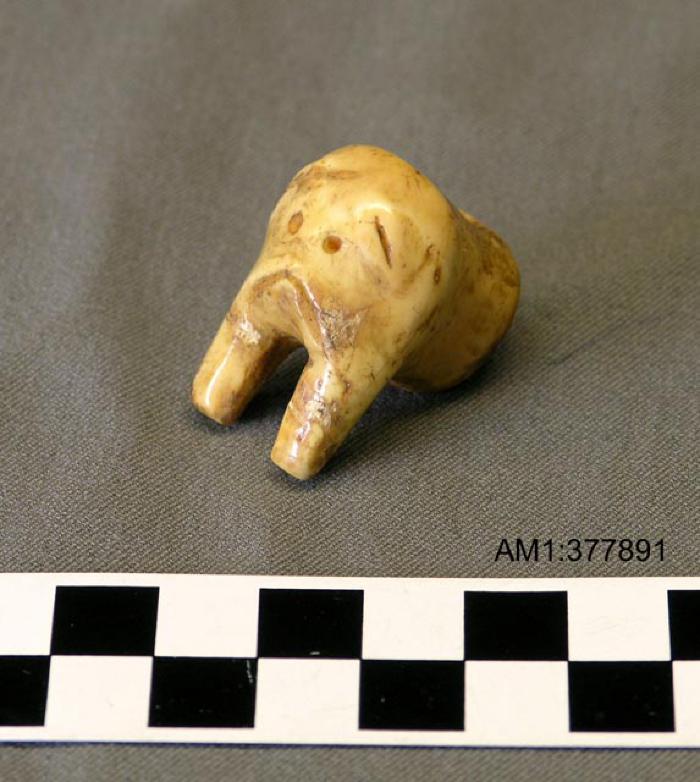Walrus — Wiinarpak

Winarpk, the Alutiiq word for the Pacific walrus (Odobenus rosmarus divergens) translates as ‘big sea lion.’ This term reflects the rarity of walrus in the Alutiiq homeland. Walruses are coastal residents of western Alaska, found along the shores of the Bering and Chukchi seas. These large sea mammals occasionally stray into the Gulf of Alaska, but the region’s warm, ice-free waters are beyond their typical range.
Although walruses are not indigenous to the Gulf of Alaska, walrus ivory has made its way to Kodiak for thousands of years. Small, carved, ivory objects appear in Kodiak’s oldest sites. Although they are rare, these objects indicate Alutiiq people were familiar with the properties of ivory. About 2,500 years ago ivory became more common and settlements contain worked pieces of ivory as well as finished ivory objects. These artifacts suggest that ivory was accessible and worked regularly. Most of these ivory carvings are smalls and decorative. People made jewelry, amulets, and even dolls from ivory. One such carving, from the Uyak site in Larsen Bay, depicts a walrus head! But there are also some stunning, large ivory carvings. A figurine found on Afognak Island was fashioned from a 10-inch section of a tusk.
Why do craftsmen value walrus ivory? Even the most compact bone has small holes that create a grainy appearance. In contrast, ivory is heavily mineralized, smooth, and free of irregularities. These characteristics allow ivory to be carved and polished into beautiful shapes.
